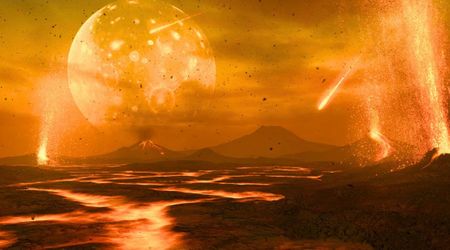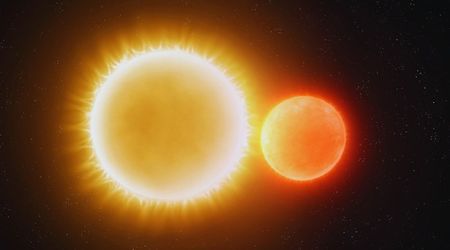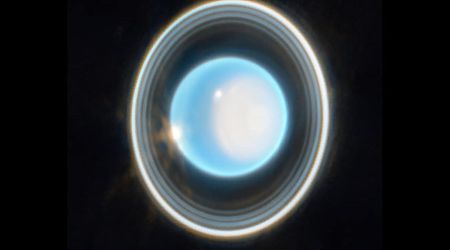FU Orionis

Stars that do something are fun to watch. In late 1936, a 16th-magnitude star erupted in the constellation Orion, and by early the next year it had attained 10th magnitude – that is a brightening by a factor of over 250! Accompanying the mysterious star was a bright nebulosity, which glowed as a reflection of light from the luminous star.
The 1936 uprising of FU Orionis was first thought to be a nova event. Novae (like the famed example Nova Cygni 1975, which appeared on August 29, 1975, and reached magnitude +2) are hardly unusual; many are found each year. They are surface explosions that take place on white dwarfs when they accumulate too much fresh hydrogen from a companion star. When the fresh fuel is burned, novae quickly fade. FU Orionis, however, challenged expectations by staying lit up for over 70 years. The star still shines at 10th magnitude today.
Since no other star was known to behave like FU Orionis and since little was known about the star itself, astronomers waited for further clues from FU Orionis or more examples to emerge. In 1969, a star embedded in the “East Texas” region of the North America Nebula (NGC 7000) jumped from 16th to 10th magnitude. The star, V1057 Cygni, attained maximum luminosity in mid-1970, and afterwards it slowly faded; it now lies three magnitudes below peak brightness.
Since then, another eight similarly behaving stars have been discovered and FU Orionis, the first, is the privileged prototype. FU Orionis stars are in fact pre-main sequence stars in the early stages of stellar development. They have only just formed from clouds of dust and gas in interstellar space, which occurs in active star-forming regions.
At this early stage of evolution, a star is surrounded by an accretion disk, and matter is falling onto the outer regions of the disk from the surrounding interstellar cloud. Thermal instabilities, most likely in the inner portions of the accretion disk, initiate an outburst and the young star increases its luminosity. Our Sun probably went through similar events as it was developing.
FU Orionis is easily visible in a small backyard telescope. It lies in northern Orion near the imaginary shoulder of the great hunter, about 3° northwest of Betelgeuse and less than 2° southeast of Collinder 69. This is a wonderful and yet woefully neglected open star cluster for small telescopes, consisting of the stars that form Orion’s “head”.









